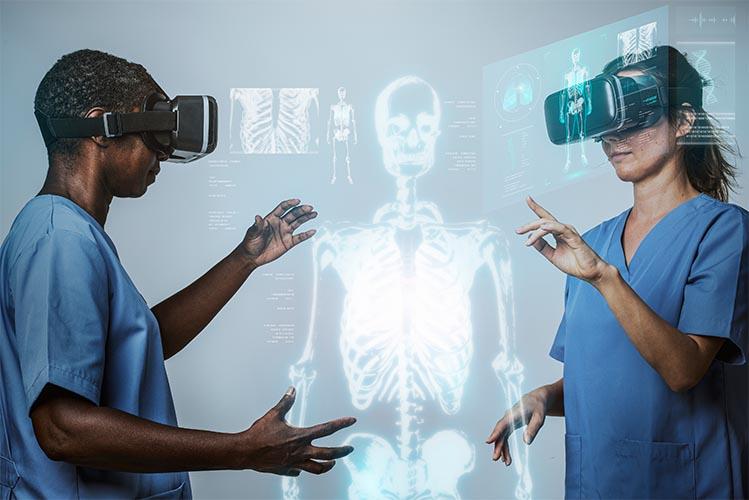In the field of medical diagnosis, AI can be used to analyze medical images, such as X-rays, CT scans, and MRIs, to help identify diseases or conditions. For example, AI algorithms can be trained to detect patterns in images that are indicative of specific diseases, such as lung cancer or breast cancer. This can help radiologists and other medical professionals make more accurate diagnoses, which can improve patient outcomes.
AI can also be used to analyze patient data, such as electronic health records (EHRs), to help identify individuals at risk for certain conditions. For example, an AI system could analyze a patient’s EHR to identify risk factors for heart disease, such as high blood pressure and cholesterol, and then flag the patient for further testing or treatment. AI can also be used to help predict which patients are at high risk of developing certain conditions, such as diabetes, so that preventative measures can be taken.

AI illustration in Diagnosis & Drug Development - axiFYL
In the field of drug development, AI can be used to analyze large amounts of data from clinical trials and preclinical studies to identify potential drug targets and help prioritize the most promising compounds for further development. For example, an AI system could analyze data from thousands of studies to identify patterns in genetic or molecular data that are associated with specific diseases. This can help researchers identify new drug targets and prioritize compounds for further study.
AI can also be used to design and optimize new drugs. For example, an AI system could use machine learning algorithms to predict how a drug will interact with specific proteins in the body, or to predict the most likely side effects of a drug. This can help researchers design drugs that are more effective and have fewer side effects. Additionally, AI can be used to speed up the drug discovery process by automating repetitive and time-consuming tasks, such as screening large libraries of compounds to identify potential drugs.
It’s important to note that the use of AI in diagnosis and drug development is still in the early stages and there are limitations to the current technology. For example, AI algorithms require large amounts of data to be trained, and the quality of the data is critical to the performance of the algorithm. Additionally, AI algorithms may not be able to identify rare conditions or diseases that occur infrequently. However, with the continuous development of technology, AI is becoming more advanced and accurate and has the potential to improve the speed and accuracy of diagnosis, as well as the efficiency and effectiveness of drug development, ultimately leading to better outcomes for patients.
Overall, AI has the potential to improve the speed and accuracy of diagnosis, as well as the efficiency and effectiveness of drug development, ultimately leading to better outcomes for patients. However, it is important to note that AI is not a replacement for human doctors and scientists, but rather a tool to aid them in their work.




